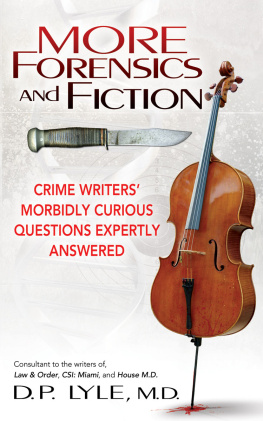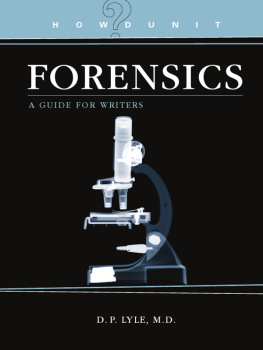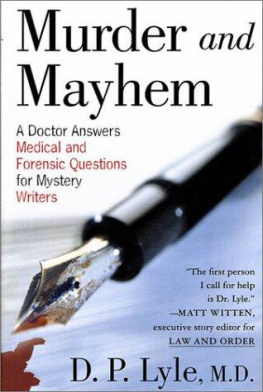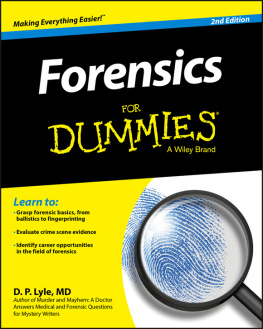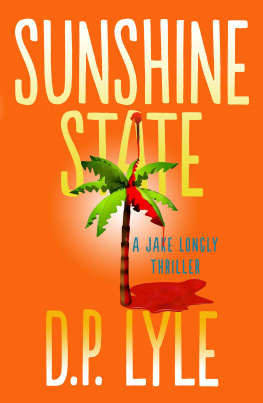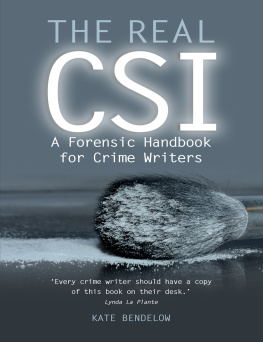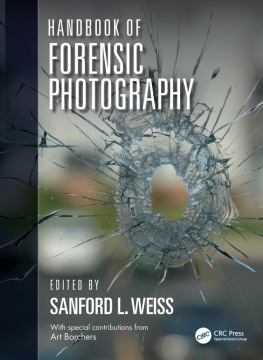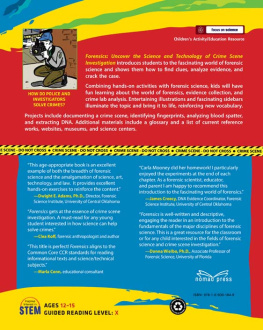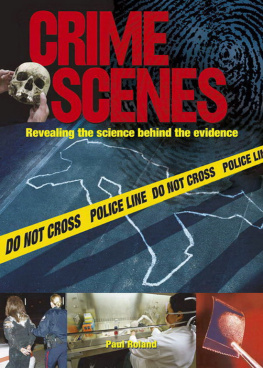

Published 2012 by Medallion Press, Inc.
The MEDALLION PRESS LOGO
is a registered trademark of Medallion Press, Inc.
Copyright 2012 by D.P. Lyle
Cover design by James Tampa
Edited by Lorie Popp Jones
All rights reserved. No part of this book may be reproduced or transmitted in any form or by any electronic or mechanical means, including photocopying, recording, or by any information storage and retrieval system, without written permission of the publisher, except where permitted by law.
Names, characters, places, and incidents are the products of the authors imagination or are used fictionally. Any resemblance to actual events, locales, or persons, living or dead, is entirely coincidental.
Typeset in Adobe Garamond Pro
Printed in the United States of America
ISBN# 9781605422459
INTRODUCTION

The first book in this series, Murder and Mayhem: A Doctor Answers Medical and Forensic Questions for Mystery Writers, appeared in 2003, and the second, Forensics and Fiction: Clever, Intriguing, and Downright Odd Questions from Crime Writers, in 2007. Once again Ive attributed each question to its author, if he or she chose to be identified. Some preferred to remain anonymous, and others I simply could not reach because their contact information was no longer valid.
You will see questions from professional, multipublished, award-winning authors alongside those submitted by writers who are still searching for a home for their stories. What do these disparate groups of writers have in common? Each is a storyteller. Each possesses the same driving curiosity and the desire to get it right. Each settles before that annoying blinking cursor with the same questions. Can I write a believable and publishable story? Can I transfer the images in my head to paper in a coherent manner? Can I make the reader turn the page?
Many of the questioners have books in publication and personal websites. Visit their sites and read their books. Your effort will be rewarded.
This book is intended to inform and entertain not only writers but anyone who enjoys books, movies, or a good story. The questions and answers inside will offer some insight into how writers think and how they construct their stories. I am confident that readers will find many interesting, educational, humorous, and downright odd things in these pages.
As was the case with the earlier books in the series, this book is not solely mine. It belongs to many people. To each writer who submitted a question, I thank you for your curiosity, your imagination, and your dedication to accuracy. I have learned as much from researching and answering your questions as I hope you have from my answers.
To all the readers out there, I hope this book answers some of your own questions, raises your level of understanding of medical and forensic issues, causes new questions to sprout within your own mind, and, most of all, stirs your creative juices. Maybe youll ask yourself the question that starts every writers journey into a new story: What if? Maybe youll pick up pen and paper and join us in this often maddeningbut always rewardingprofession.
In answering each question, I have attempted to give enough background to add context to the particular medical or forensic issue at hand as well as to address the nuances of the specific scenario. The goal is to allow the writer to use this newly gained understanding to craft a more believable scene or story. I have tried to make each question and answer stand alone, while minimizing unnecessary repetition of information contained in other questions.
What this book is not:
In no way should the material contained in this publication be used for diagnosis or treatment of any medical disorder. Even the simplest question and answer would require decades of education and experience before it could be applied in a real-life situation.
Although I have endeavored to make the information accurate and scientifically correct, many subjects are too complex to explain in detail while addressing the nuances and controversies of modern medical knowledge. Such is the art of medicine. The answers are provided for use in the context of fiction writing and storytelling and should not be used for any other purpose.
This book is not to be used for any criminal activity or to bring harm to anyone.
TABLE OF CONTENTS

PART I
TRAUMATIC INJURIES,
ILLNESSES, DOCTORS,
AND HOSPITALS
WHAT INJURIES MIGHT MY CHARACTER SUFFER IN AN AUTO ACCIDENT THAT WOULD REQUIRE HOSPITAL TREATMENT FOR AT LEAST THREE DAYS?
Q My protagonist gets into a car accident. I need him to be kept in the hospital for at least three days to leave his partner alone to get into trouble. Nothing life threatening but rather something that requires ongoing medical attention. Someone suggested a blood clot could show up after an accident and would require treatment with anticoagulants. Would this work? What kind of anticoagulant would he be given? How long would he be in the hospital?
P.A. Brown
Author of the L.A. Shadows series
Ontario, Canada
www.pabrown.com
A There is a wide array of injuries that can occur in an automobile accident, but a blood clot is not one of them. Not that it cant happen, just rarely in the period immediately following the accident. Blood clots can form a day or more later when the victim is in the hospital and confined to the bed. This is particularly likely with injuries to the legs or pelvis. We call this thrombophlebitis or deep venous thrombosis (DVT). If one of the clots breaks free and travels through the right side of the heart and into the lungs, this is called a pulmonary embolus (PE), which can be immediately deadly. DVT and PE typically do not occur for several days after an accident and usually only if the person is severely traumatized and confined to bed rest. The anticoagulant treatment is heparin for several days followed by coumarin for many months.
Since you want your character to survive, I suggest something less serious. The fracture of a rib or two could easily occur under these circumstances. This is extremely painful, and he would likely be kept in the hospital for two or three days. In accidents such as this, rib fractures are often associated with contusions (bruises) of the lung, which could further complicate and delay his complete recovery.
In either circumstance, the treatment is limiting mobility, pain medications, and oxygen by mask or nasal prongs to make breathing easier. He could be released from the hospital after a few days but would have a great deal of pain for the next two or three weeks. Ribs heal slowly. He would not likely return to work until he could function off the pain meds. There is no specific treatment for a simple rib fracture except for pain medications and time. I think this injury would fit your plot needs quite well and would not require much scientific explanation for the reader to understand the situation.
CAN MY SERIAL KILLER NURSE USE INJECTEDAIR TO KILL HER VICTIMS?
Q In my story, a nurse becomes a serial killer. I have heard that injection of a bolus of air into the vein or artery will kill the intended victim, mimicking a heart attack. If this is true, how much air should be injected? Where can the injection needle be placed, so it will not be detected or cause the medical examiner to suspect anything but a natural cause of death? How long will it take the victim to die?
Next page
